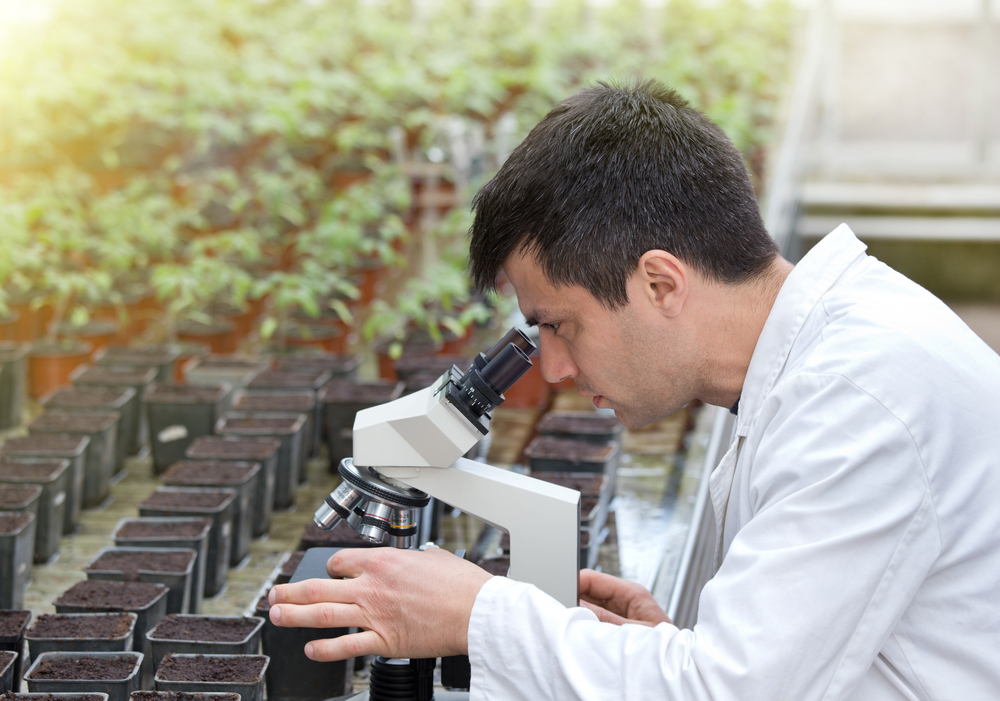
Plants serve a variety of purposes ranging from food and medicine to clothing and furniture. And now they have a new use – in the Department of Defense (DOD).
The U.S. Defense Advanced Research Projects Agency (DARPA) is working on a plan to use plants to gather intelligence information.
While this may never be the plot of an espionage thriller, “plant spies” are on the way to becoming a very real part of homeland security. DARPA’s Advanced Plant Technologies (APT) program aims to direct the physiology of plants to detect a variety of hazards, including chemical, biological, radiological and nuclear threats, according to Dr. Blake Bextine, the DARPA program manager for the Advanced Plant Technologies.
While other types of APTs study crops, pests, diseases that invade them, and ways to increase crop yield, the goal of DARPA’s APT program is more ambitious, seeking to “sniff out” chemical weapons and bioweapons.
“Plants respond to stimuli in their environment – think about roots growing toward a water source,” Bextine told Homeland Preparedness News. “Because plants naturally respond to many categories of stimuli, we believe that they can serve as sensitive detectors for many DOD-relevant threats.”
Bextine notes that there is a world of possible applications. “If plants have the ability to detect explosives and can then signal landmine location through changes in leaf color, people can avoid hazards and the danger can be removed.”
It is already known that plants respond to such stimuli as temperature, touch, pests and moisture. They also respond to light and darkness, gravity and chemicals.
”We simply want to modify what they are capable of detecting and link it to an output that can be recognized by someone that is looking for it,” Bextine says. These modifications include engineering plant sensors and trigger mechanisms that can be observed remotely and discreetly.
Plant sensors also could be used outside of the military. “Humanitarian efforts will likely benefit from this program,” Bextine says. “Such sensors could make it possible, for instance, for communities to safely identify landmines or unexploded ordinance leftover from past conflicts or testing grounds.”
However, there are several challenges that must be overcome. For example, how can the plants’ genomes be modified to achieve the desired goal without compromising the health of the plants – particularly as it relates to being able to stave off competition from other plants, insects and other stressors? Also, if the plants were monitored remotely, they would need to survive on their own for extended periods of time ranging from a few months to a few years.
Achieving both the sensor and other technical goals of the APT program will require implementing the latest plant genomics technologies, gene editing tools and unique ways of engineering new sensing capabilities and physiological responses, according to an overview of the Advanced Plant Technologies program.
DARPA hopes to get one step closer to meeting its program goals at its APT Proposers Day, which will be held on Dec. 12 in Arlington, Virginia. Participants will be able to pitch ideas proposing plant modification strategies, detection capabilities and output phenotypes.
They will also be expected to explain approaches for accomplishing the project’s technical goals and address any risks, in addition to providing a team organization chart, cost summaries and project schedule. DARPA will award contracts to selected proposers. Attendance at the event is not mandatory to submit a proposal or be considered for a DARPA contract.
The first phase of the program will be conducted in DARPA-based labs and greenhouses, with testing occurring in simulated environments. Once the program is proven to be safe, the U.S. Department of Agriculture’s Animal and Plant Health Inspection Service will monitor the plants to ensure they don’t present a public safety hazard.




